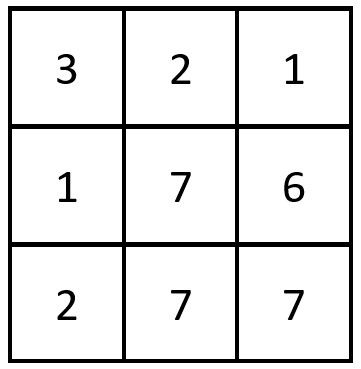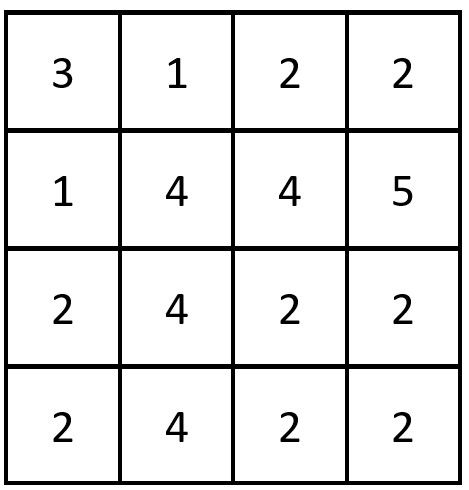| comments | difficulty | edit_url | rating | source | tags | ||||
|---|---|---|---|---|---|---|---|---|---|
true |
Medium |
1286 |
Weekly Contest 303 Q2 |
|
Given a 0-indexed n x n integer matrix grid, return the number of pairs (ri, cj) such that row ri and column cj are equal.
A row and column pair is considered equal if they contain the same elements in the same order (i.e., an equal array).
Example 1:
Input: grid = [[3,2,1],[1,7,6],[2,7,7]] Output: 1 Explanation: There is 1 equal row and column pair: - (Row 2, Column 1): [2,7,7]
Example 2:
Input: grid = [[3,1,2,2],[1,4,4,5],[2,4,2,2],[2,4,2,2]] Output: 3 Explanation: There are 3 equal row and column pairs: - (Row 0, Column 0): [3,1,2,2] - (Row 2, Column 2): [2,4,2,2] - (Row 3, Column 2): [2,4,2,2]
Constraints:
n == grid.length == grid[i].length1 <= n <= 2001 <= grid[i][j] <= 105
We directly compare each row and column of the matrix
The time complexity is
class Solution:
def equalPairs(self, grid: List[List[int]]) -> int:
n = len(grid)
ans = 0
for i in range(n):
for j in range(n):
ans += all(grid[i][k] == grid[k][j] for k in range(n))
return ansclass Solution {
public int equalPairs(int[][] grid) {
int n = grid.length;
int ans = 0;
for (int i = 0; i < n; ++i) {
for (int j = 0; j < n; ++j) {
int ok = 1;
for (int k = 0; k < n; ++k) {
if (grid[i][k] != grid[k][j]) {
ok = 0;
break;
}
}
ans += ok;
}
}
return ans;
}
}class Solution {
public:
int equalPairs(vector<vector<int>>& grid) {
int n = grid.size();
int ans = 0;
for (int i = 0; i < n; ++i) {
for (int j = 0; j < n; ++j) {
int ok = 1;
for (int k = 0; k < n; ++k) {
if (grid[i][k] != grid[k][j]) {
ok = 0;
break;
}
}
ans += ok;
}
}
return ans;
}
};func equalPairs(grid [][]int) (ans int) {
for i := range grid {
for j := range grid {
ok := 1
for k := range grid {
if grid[i][k] != grid[k][j] {
ok = 0
break
}
}
ans += ok
}
}
return
}function equalPairs(grid: number[][]): number {
const n = grid.length;
let ans = 0;
for (let i = 0; i < n; ++i) {
for (let j = 0; j < n; ++j) {
let ok = 1;
for (let k = 0; k < n; ++k) {
if (grid[i][k] !== grid[k][j]) {
ok = 0;
break;
}
}
ans += ok;
}
}
return ans;
}
